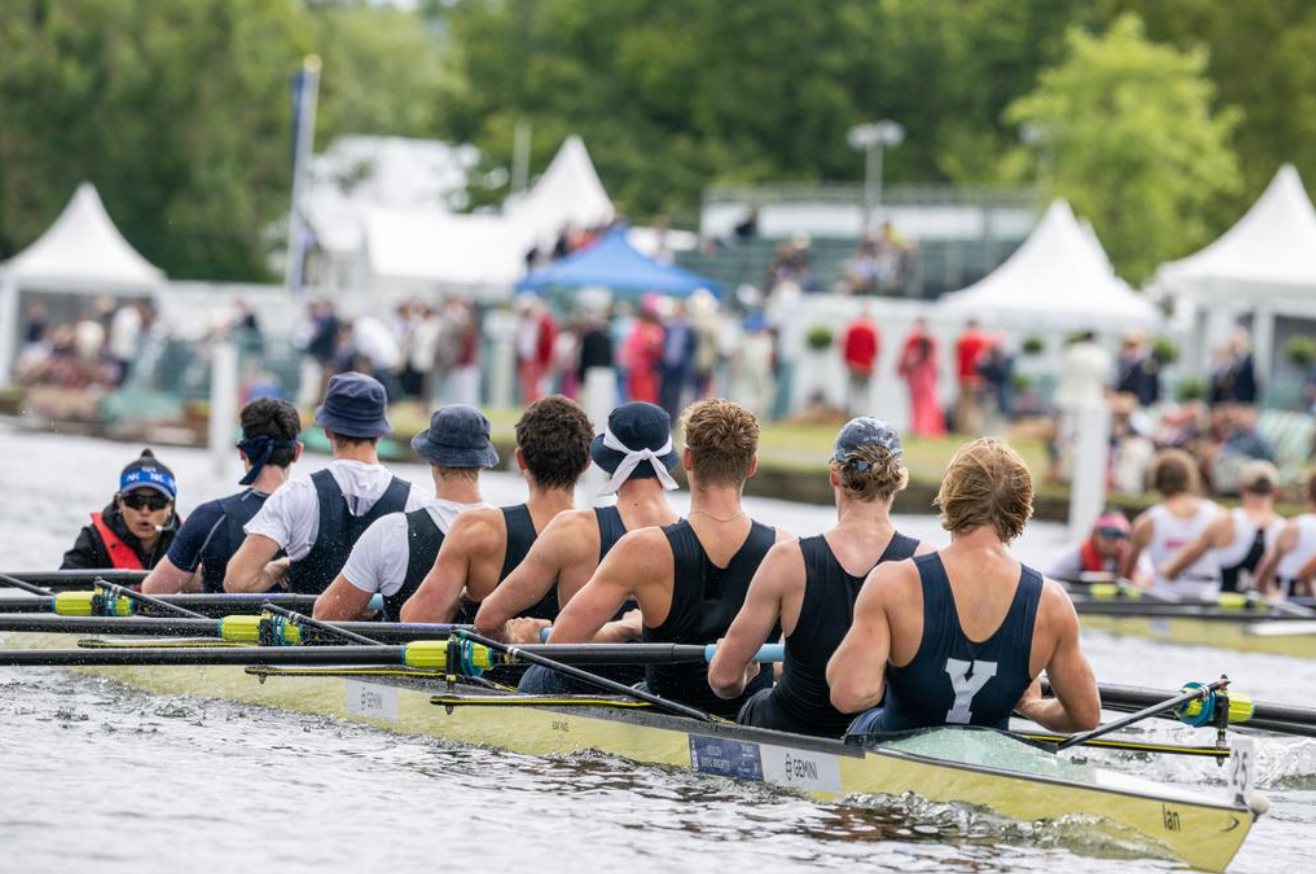CREW: Bulldogs capture top spots at Head of Housatonic
Fourteen Yale boats kicked off the fall season with impressive finish times at the Housatonic River.

Yale Athletics
Gilder Boathouse bustled with life on Saturday as the men’s and women’s crew teams began the fall racing season.
As one of the largest one-day racing events on the East Coast, the Head of the Housatonic has hosted thousands of athletes and hundreds of crews annually since 1994. The 2.6 mile upstream race course starts north of Yale’s Gilder Boathouse at Indian Well State Park and finishes at the New Haven Rowing Club Boathouse. This weekend, Yale was represented by 14 boats, with several of them capturing top spots in their respective events.
“The Housatonic is a chance for everyone to race, and that is something that only happens a few times a year,” lightweight captain Jamie Patterson ’23 told the News. “It is special as somewhat of a unique experience to get everybody out there racing at once. It is exciting when all of [the first years] can join us.”
The women’s crew competed in four eights in the Division I event, posting three of the top four finishing times. The Yale 1V boat victored with an impressive 15:10.6 time, nearly seven seconds faster than the 2V. The rest of the fleet placed fourth and ninth.
“We were mainly trying to compete against ourselves because we race on this river every day, so it is a really good marker for us,” said Anna Scott ’23, who rowed in the first varsity.
The weather on Saturday favored spectators, who were welcomed with dry and sunny conditions. But the crews faced a strong headwind as they raced upstream. Esha Bhattacharya ’24, coxswain for the women’s first varsity, explained that the wind added 30 seconds to the normal race time and noted that “conditions were not ideal, but could have been worse.”
As the Bulldogs’ home river, the Housatonic is familiar to all Yale crews. Bhattacharya noted that for head racing, where boats start off individually and are timed from start to finish, steering can make a big difference in terms of meters and avoiding flow and wind, so it was helpful that the crews were accustomed to the turns of the river.
“What we took from this race is that you can never get complacent with where you are sitting,” Scott said. “You always have to keep pushing and be as aggressive as you can … You never know when you can win head racing, so you always have to be on your game, and that is one thing we can take going into the Head of the Charles.”
Without an official lightweight event, the Y150 decided to forego the weigh-in and entered four boats to compete in the heavyweight event and one novice crew in a separate event. Patterson told the News that the crew was focused on delivering “as fast a piece as they can,” and did not dwell on who they were racing against.
In the men’s collegiate IRA event, the first varsity came in seventh place, posting a 13:56.9 time, with the rest of the fleet finishing in 11th, 17th and 18th place. The novice eight captured second place behind Fairfield with a 16:22.9 finishing time.
Patterson noted that lightweight boats are especially affected by wind, with tailwinds favoring them. He said that the headwind and weather conditions created a “chaotic atmosphere,” but it made for “fun racing.” Similarly to the women, the lightweights use this event as an opportunity to compare how the boats performed — both within each eight and relative to one another.
Five heavyweight crews competed in the men’s open IRA eights, where the first varsity captured the top spot with a 13:17.3 finish time. The remaining boats placed third, fifth and eighth, respectively. The fifth boat was disqualified.
“We were pretty happy across the board with the results,” Harry Keenan ’24, coxswain for the heavyweight first varsity, told the News. “For racing, it is interesting because it is important for building the base, but most of the work happens outside the race days. So, it is fun to get in lineups, and we want to put out the strongest performance we can, but we do not obsess over the results. It is very much just an indicator of where we need to improve rather than something we lean into heavily.”
Keenan said that there was a lot of “commotion” meaning it was windy and there were lots of bends. These are similar conditions to those the boats will endure at the Head of the Charles, making Saturday’s race a “good simulator.”
Overall, Keenan described the event as “lighthearted” and that while everyone performs as best they can, in the end, they take the results “with a grain of salt.”
All of the crew members who spoke with the News highlighted the alumni presence at Gilder on Saturday. Bhattacharya mentioned that during races, the boathouse is mainly populated by the crew members, but the Head of the Housatonic is one of the few times they witness a strong spectator presence.
The Bulldogs will culminate their fall season at the Head of the Charles in Cambridge, MA on Oct. 21-23.







